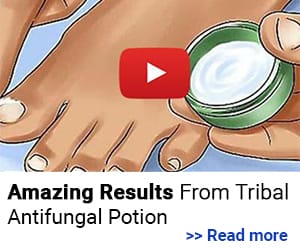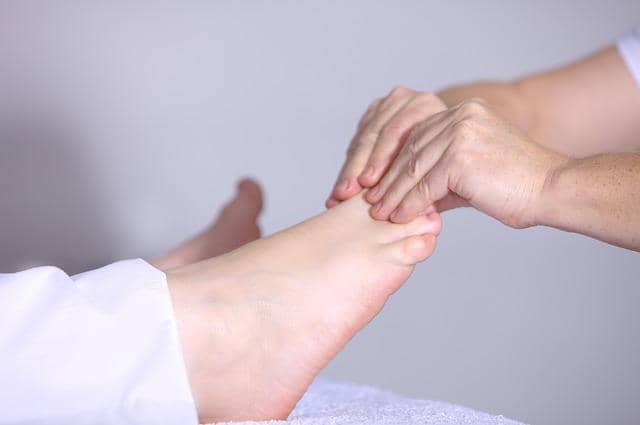What Is Athletes Foot?
Athletes foot is a fungal infection of the skin caused by a type of fungus known as tinea pedis. This disease affects both men and women equally, although it tends to affect people over 40 most often. The symptoms include itching, scaling, redness, blisters, and sometimes pain.
The fungus thrives in warm, humid conditions and spreads easily among shoes and socks. To prevent spreading the infection, wash your feet regularly and wear clean, dry clothing while you sleep. If you notice signs of athletes foot, see a doctor immediately.
What Causes Athletes Foot?
 Dermatophytes are microscopic fungi that live naturally on our skin. They cause athlete’s foot because they grow too much and start producing a sticky substance called mycelium. Mycelium is what makes the athlete’s foot look like itchy red bumps. These fungal infections usually occur around the toes, feet, soles, armpits, groin, and hairline.
Dermatophytes are microscopic fungi that live naturally on our skin. They cause athlete’s foot because they grow too much and start producing a sticky substance called mycelium. Mycelium is what makes the athlete’s foot look like itchy red bumps. These fungal infections usually occur around the toes, feet, soles, armpits, groin, and hairline.
Athletes foot is contagious and spreads easily. You can spread it to others by touching infected areas. If you touch someone else’s feet, make sure to wash your hands thoroughly afterwards.
If you think you might have athlete’s foot, see your doctor for treatment options. Your doctor may prescribe antifungal creams, lotions, powders, sprays, or pills. Some medications work better than others.
How is athletes foot diagnosed?
Doctors may diagnose athletes foot without doing a potassium hydroxide (KOH) test. They may do a physical examination and look for signs of infection like redness, swelling, pain, or tenderness.
If you’ve had athletes foot in the past, doctors may ask about it and review your medical history. Your doctor may order a KOH test. This involves taking a sample of the infected area and putting it under a microscope. A positive KOH test indicates fungus.
Who is at risk for athletes foot?
Athletes foot is one of those things you just don’t want to know about. Not because it’s embarrassing, but because it could become serious if left untreated.
In fact, many experts say that athletes feet are among the most common places where fungal infections start.
And while there are some ways to treat it at home, prevention is key. So what exactly causes athletes foot? Here’s everything you need to know.
Why You Get Athletes Foot
The fungus that causes athlete’s foot thrives in warm, moist environments like public showers, locker rooms, saunas, swimming pools, hot tubs, and even shoes.
When someone with sweaty skin gets into contact with something damp, such as a towel, gym bag, shoe, or sock, the fungi thrive and multiply quickly. Once the infection starts spreading, it can take anywhere from a few days to several weeks to clear up completely.
How To Prevent Athletes Foot
 There are actually three different types of athlete’s foot: tinea pedis, tinea corporis, and tinea unguium.
There are actually three different types of athlete’s foot: tinea pedis, tinea corporis, and tinea unguium.
While each type affects different areas of the body, the symptoms are similar and include itching, burning, redness, blisters, and pus.
Washing hands often helps reduce the chances of spreading germs around. Make sure to wash your hands before eating, after touching public surfaces, and after changing diapers.
What are the symptoms of athletes foot?
Athlete’s foot is a common skin infection caused by fungus. This type of fungal infection occurs most often among people whose feet sweat excessively, such as athletes and those who work around water.
Athlete’s foot is characterized by small red bumps on the bottom of the feet. These bumps look like little pimples. The infected area becomes dry, cracked and itches intensely.
Symptoms include itching, burning, tingling, and pain. If you notice any of these symptoms, see a doctor immediately.
A physician can diagnose athletes foot based on your medical history, physical examination, and how well your symptoms respond to treatment.
Your doctor may prescribe antifungal medication, depending on what tests show about the cause of your infection.
If you suspect athletes foot, keep your feet clean and dry. Wash your feet thoroughly every day, including under the toes.
Wear cotton socks rather than synthetic ones to help keep your feet dry. Wearing open shoes encourages sweating, which increases the risk of developing athlete’s foot.
Avoid wearing flip-flops because they trap moisture between the sole and the shoe unlike closed shoes. Keep your nails short and trim them regularly.
How is athletes foot treated?
Athletes foot is caused by fungi growing on their feet. This fungus causes itching and redness of the skin and sometimes blisters. There are several types of treatment for athlete’s foot including topical creams, powders, lotions, and ointments.
OTC Products Work Well For Treating Athletes Foot
There are many over-the-counter treatments for athletes’ feet. These include moisturizers, antifungal shampoos, and foot baths. Some people prefer to use natural remedies such as aloe vera gel, tea tree oil, vinegar, baking soda, and cornstarch.
Prescription Medicines Are Needed For Severe Cases
If you have very dry skin, it is best to apply a prescription medicine. You might want to consider applying a cream containing clotrimazole or miconazole nitrate. If there is no improvement within three days, see your doctor.
Regular Application Of Powder Helps Prevent Reoccurrence Of Condition
You can help prevent recurrences of athlete’s foot by regularly applying antifungal powder to affected areas. You can buy powder specifically designed for athlete’s or make your own by mixing cornstarch or talcum powder with water. Apply the mixture to your feet every night.
OTC medications
Topical medications work faster than OTC medications. They are applied directly to the affected area and usually take effect within 15 minutes.
This allows you to use topical medications immediately, without having to wait for it to dissolve into your system. In addition, topical medications don’t require daily dosing like oral medications do. You’ll only need to apply one medication per application.
Oral medications, on the other hand, must be taken every day for up to three months before you see an improvement in your symptoms.
If you stop taking them, you risk experiencing a flare-up of your symptoms. And even though topical medications are less effective than oral medications, they still provide some relief.
“Wound healing”
If you’re dealing with a wound, steroid cream can speed up the process of healing. But it doesn’t prevent the wound from reoccurring. Wounds tend to heal themselves naturally over time, regardless of whether you treat them with steroids.
“Prevention”
You can use topical medications to prevent certain skin conditions from occurring in the future. For example, you could use topical corticosteroids to reduce inflammation caused by acne.
However, topical medications aren’t designed to prevent you from getting sick. So, if you already have a cold, fever, or flu, you shouldn’t use topical medications.
Prescription medications
Topical steroids should never be used directly on the skin. They must always be prescribed for oral use, according to Dr. Michael Zasloff, founder of Dermatology Associates of New Jersey. “They’re very powerful drugs,” he told Medical Daily. “You don’t want to put them on the skin.”
Oral antibiotics are effective against bacterial infections, such as acne, while topical antibacterial creams work best against staphylococcus bacteria, which cause pimples and rashes.
Antifungal agents are often prescribed for people suffering from athlete’s foot, ringworm, jock itch, tinea pedis, and candida albicans.
Natural Remedies For Foot Fungus
Some well-known natural treatments for athletes foot are:
Apple cider vinegar
Mix 1/2 cup apple cider vinegar with 2 cups warm water. Use this solution as a washcloth to clean your feet. It will also kill any fungus that may be present.
Aloe vera gel
Apply aloe vera gel directly to your feet. The gel contains enzymes that break down dead skin cells, making it easier for new skin cells to grow. Aloe vera is also soothing and moisturizing.
Tea tree oil
Mix 1 drop tea tree oil with 1 tablespoon coconut oil. Massage the mixture onto your feet using circular motions. Tea tree oil has been shown to be effective at treating fungal infections.
Lemon juice
Squeeze the juice from half a lemon into a bowl. Dip a cotton ball into the lemon juice and place it on your feet. Leave it there overnight. Lemon juice helps dry out the area, killing off any fungi that might be present.
Coconut oil
Massage coconut oil into your feet. Coconut oil is rich in lauric acid, which kills off fungi and prevents their growth.
Baking soda
Add 1 teaspoon baking soda to 1 cup of hot water. Mix thoroughly and apply to your feet. Baking soda works as an antiseptic and disinfectant.
Garlic
Slice two cloves of garlic and rub them all over your feet. Garlic is said to help fight off infection.
Eucalyptus essential oil
Add 10 drops of eucalyptus essential oils to 1 cup of olive oil. Apply the mixture to your feet. Eucalyptus essential has anti-fungal properties.
 These are just some suggestions to treat your athlete’s foot, but if you’re looking for something proven try this formula which is a unique blend that fungus has never been exposed to, killing it off for good and getting rid of any spores that might remain behind. The result, is perfect nails, and skin, with the bad smell and itching completely gone forever.
These are just some suggestions to treat your athlete’s foot, but if you’re looking for something proven try this formula which is a unique blend that fungus has never been exposed to, killing it off for good and getting rid of any spores that might remain behind. The result, is perfect nails, and skin, with the bad smell and itching completely gone forever.
